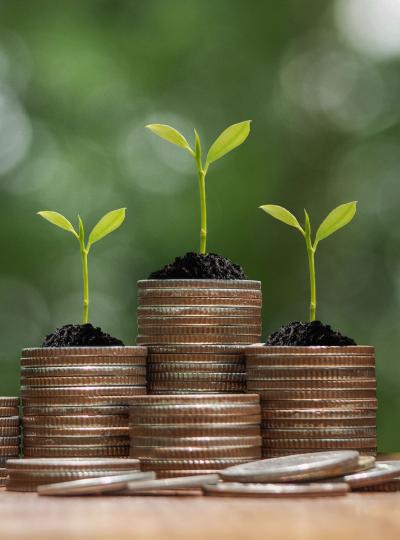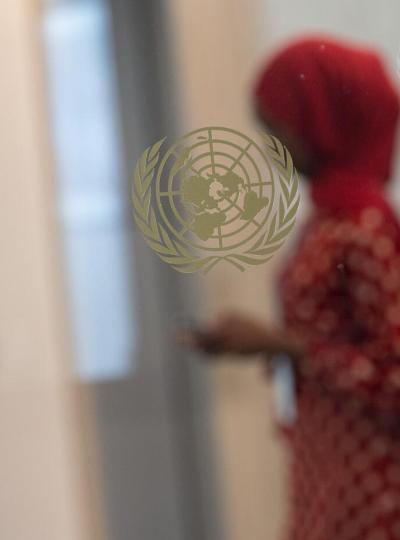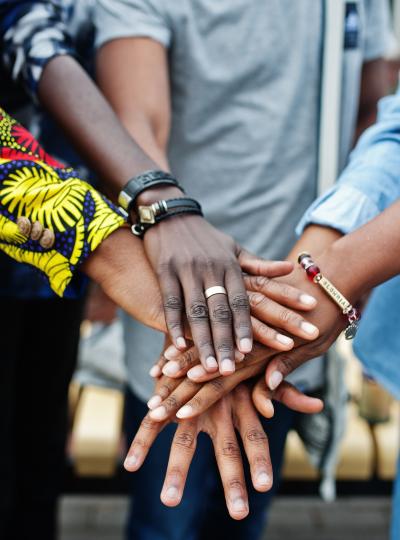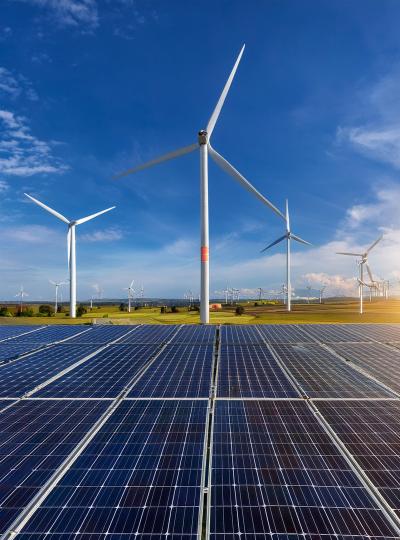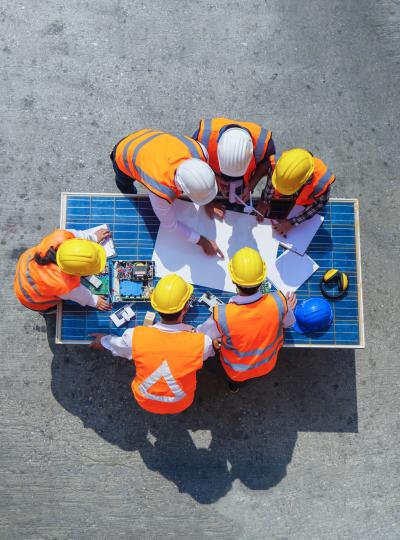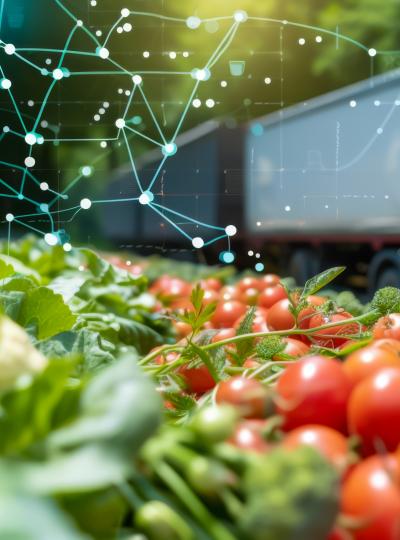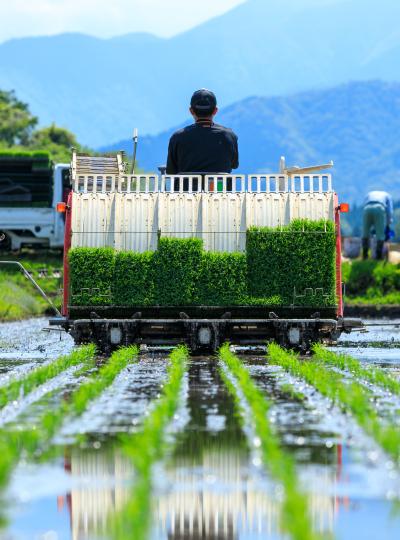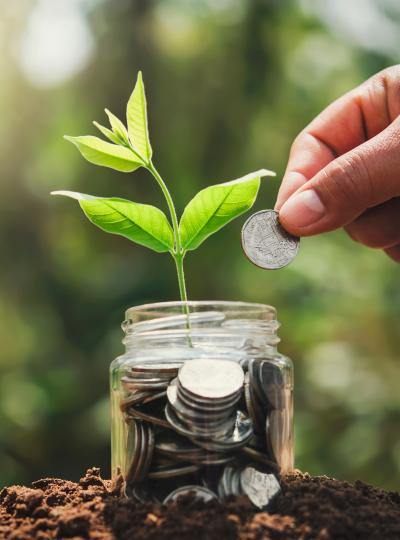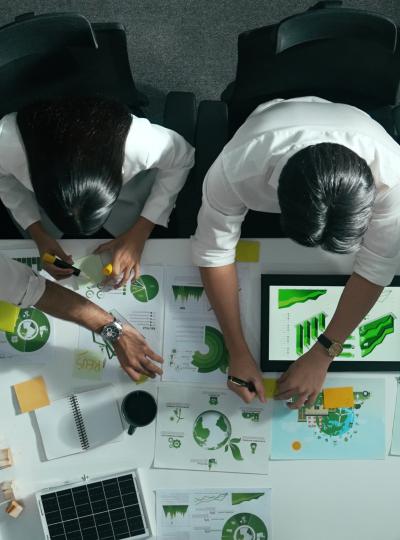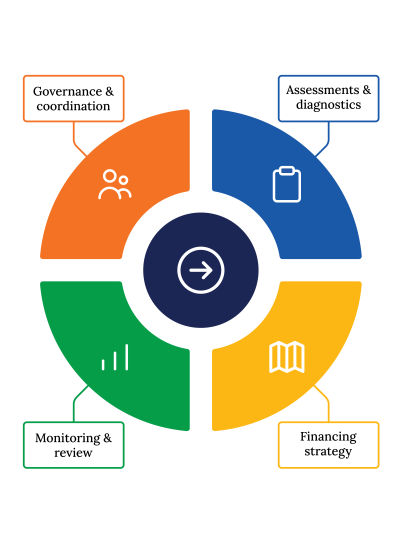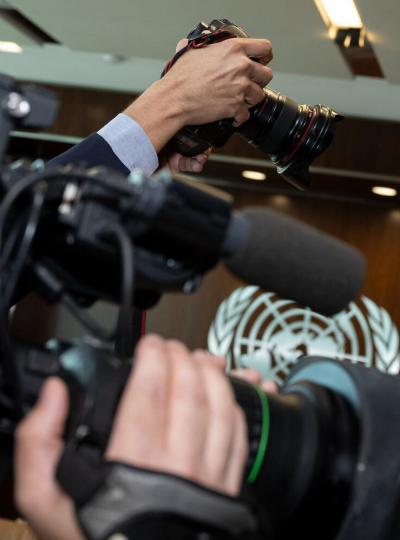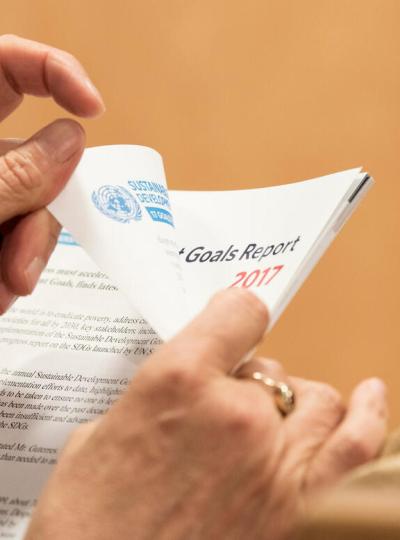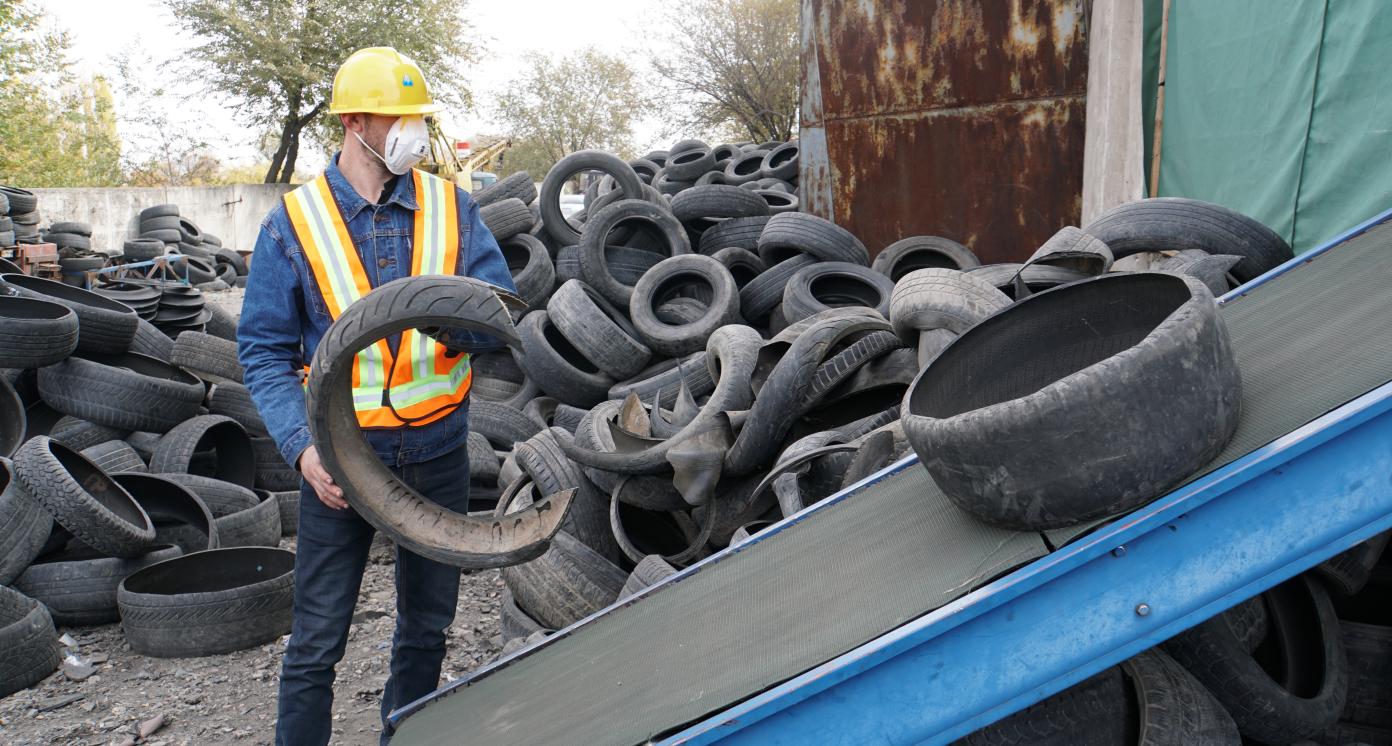End-to-end Waste Management Solutions
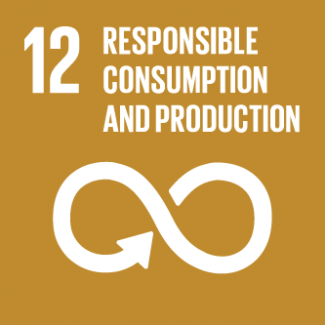
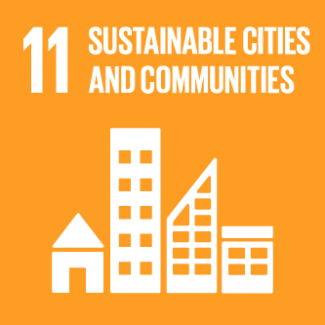
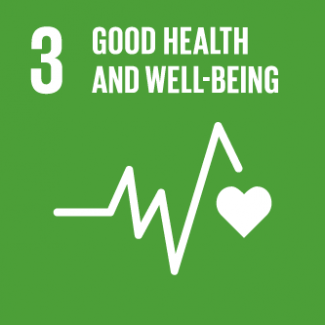
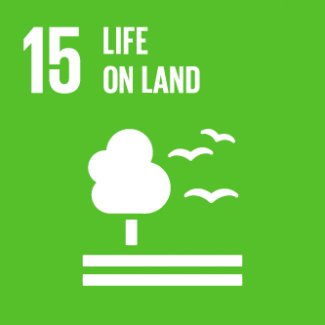
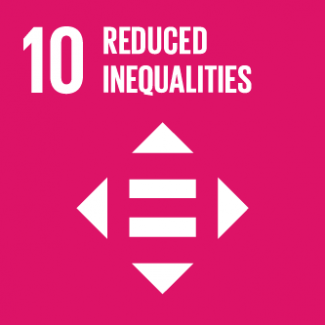
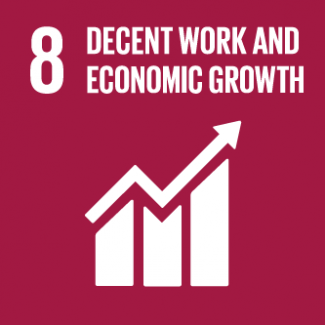
Business Model Description
Process, recycle, and produce upcycled products, including cardboard, paper bags, polyester wadding and other materials, by collecting waste materials such as paper or plastic from households and public places through public-private partnership (PPP) agreements with the local government and from businesses through direct purchase of waste. Sell the final product to retailers or as raw materials for production of further added value.
Expected Impact
Improve waste collection and disposal near tourism sites and in rural areas, enhance demand for collected waste from waste processors, and reduce soil and water resources degradation.
How is this information gathered?
Investment opportunities with potential to contribute to sustainable development are based on country-level SDG Investor Maps.
Disclaimer
UNDP, the Private Finance for the SDGs, and their affiliates (collectively “UNDP”) do not seek or solicit investment for programmes, projects, or opportunities described on this site (collectively “Programmes”) or any other Programmes, and nothing on this page should constitute a solicitation for investment. The actors listed on this site are not partners of UNDP, and their inclusion should not be construed as an endorsement or recommendation by UNDP for any relationship or investment.
The descriptions on this page are provided for informational purposes only. Only companies and enterprises that appear under the case study tab have been validated and vetted through UNDP programmes such as the Growth Stage Impact Ventures (GSIV), Business Call to Action (BCtA), or through other UN agencies. Even then, under no circumstances should their appearance on this website be construed as an endorsement for any relationship or investment. UNDP assumes no liability for investment losses directly or indirectly resulting from recommendations made, implied, or inferred by its research. Likewise, UNDP assumes no claim to investment gains directly or indirectly resulting from trading profits, investment management, or advisory fees obtained by following investment recommendations made, implied, or inferred by its research.
Investment involves risk, and all investments should be made with the supervision of a professional investment manager or advisor. The materials on the website are not an offer to sell or a solicitation of an offer to buy any investment, security, or commodity, nor shall any security be offered or sold to any person, in any jurisdiction in which such offer would be unlawful under the securities laws of such jurisdiction.
Country & Regions
- Kyrgyzstan: Issyk-Kul Oblast
- Kyrgyzstan: Bishkek
- Kyrgyzstan: Chui Oblast
Sector Classification
Infrastructure
Development need
Development need: In 2023, Kyrgyzstan ranked 89 out of 139 countries in trade and transport-related infrastructure score in the World Bank Logistic Performance Index. Low rail density and level of road pavement, depreciation of over 60% of all electricity assets, outdated water facilities, and costly digital infrastructure weaken the overall sector's resilience (1, 2, 3, 9).
Policy priority
The Program for the Development of Public-Private Partnership for 2022-2026 aims to use public-private partnerships to increase investments in the modernization of economic and social infrastructure. The National Development Programme for 2018-2040 envisages high-quality production infrastructure for economic development, including power engineering, water, and transport (4, 5).
Gender inequalities and marginalization issues
Due to the weak road and rail infrastructure, the rural population has limited access to trade and public services in regional centres. Waste management and sewerage infrastructure are also scarce in rural areas, while broadband installation is more difficult in the mountains (1).
Investment opportunities introduction
In 2023, foreign direct investments (FDI) to transport, water, and power infrastructure amounted to USD 19.6 million. In line with the government's objectives to develop high-quality production infrastructure, opportunities exist in road construction, multimodal freight hubs, waste recycling, water supply, and wastewater systems (10, 11).
Key bottlenecks introduction
Political instability and governance issues constrain the development of the sector. Additionally, the infrastructure sector lacks standardized project prioritization and is exposed to project overlap and duplication (1).
Waste Management
Development need
About 519,000 tons of waste generated annually in Kyrgyzstan are usually dumped at landfills with exhausted capacities. Out of 400 landfills In Kyrgyzstan, occupying over 600 hectares of land, around 300 waste disposal sites remain unauthorized and operate without complying with technical, sanitary and environmental safety standards (6, 7, 8).
Policy priority
The National Development Strategy for 2018-2040 priorizes the reduction of the amount of waste in landfills through the introduction of low-waste and resource-saving technologies, recycling, reuse and safe disposal of waste. The Program of Development of the Green Economy for 2024-2028 aims at regulating the waste management sector (5, 12).
Gender inequalities and marginalization issues
Poor families living near the dump sites, particularly women, who work as waste scavengers, work without protective gear, earn ~2.5-6.5 euros per day, and are daily exposed to hazardous chemicals and collapsing waste (13).
Investment opportunities introduction
The Center for Climate Finance estimates that USD 49.45 million will need to be invested in the mechanical and biological treatment of solid municipal waste for 2025-2028. Other investment opportunities exist in the processing of organic waste and plasma disposal of garbage (14, 15).
Key bottlenecks introduction
Ineffective law enforcement mechanisms resulting in the absence of an action plan, data shortage, missing infrastructure, and low public awareness limit the occurring impact and hinder the development of the sector (7).
Waste Management
Pipeline Opportunity
End-to-end Waste Management Solutions
Process, recycle, and produce upcycled products, including cardboard, paper bags, polyester wadding and other materials, by collecting waste materials such as paper or plastic from households and public places through public-private partnership (PPP) agreements with the local government and from businesses through direct purchase of waste. Sell the final product to retailers or as raw materials for production of further added value.
Business Case
Market Size and Environment
USD 100 million - USD 1 billion
1.8 million tons
There are 406 landfills in Kyrgyzstan, where only 107 landfills are authorized. The waste management sector could require USD 300-500 million in investments over the next decade to develop modern waste management facilities (18).
Kyrgyzstan’s domestic market demand for plastic bottles can reach 150 million units per year, which is about 30 plastic bottles per resident in Kyrgyzstan. Until 2024, Kyrgyzstan imported around 3,000 tons of polyethylene bags annually (20).
By 2020, 202 businesses were involved in the collection and processing of waste and in 2023, 1.8 million tons of solid waste were generated in Kyrgyzstan (17, 19).
Indicative Return
15% - 20%
Private companies active in solid waste processing report the average return on investment (ROI) for companies is 15-20% (18).
Investment Timeframe
Medium Term (5–10 years)
Private companies active in solid waste processing report the average payback period for the companies is 5-6 years (18).
Ticket Size
USD 1 million - USD 10 million
Market Risks & Scale Obstacles
Business - Supply Chain Constraints
Impact Case
Sustainable Development Need
Solid waste collection coverage varies widely, with larger cities reaching 60% to 97% while smaller towns lag behind at 25% to 50%, relying predominantly on open dumpsites for waste disposal, which poses significant environmental and public health risks (22).
In 2021, the total volume of industrial and household waste amounted to 213.6 million tons, while only 3.1% of all enterprises generating waste process, dispose of, and transfer the waste to other companies (23).
Waste pollution is also facing the tourism sector as regular garbage collection practices are absent and household and agricultural waste are dumped close to tourism sites (24).
Gender & Marginalisation
Studies show that there is a need for Kyrgyzstan to ensure that the frequency of collected solid waste is increased, particularly in poor households headed by women (25).
Expected Development Outcome
End-to-end waste treatment solutions improve environmental conditions by reducing the leachate that contaminates soil and water during waste decomposition, as well as reducing the emissions of substances hazardous to human health and the environment, formed during the combustion of waste.
End-to-end waste treatment solutions reduce the volume of industrial and household waste at landfills and near tourist sites by increasing collection and recycling practices.
End-to-end waste treatment solutions expand access to waste management services in smaller towns and remote destinations.
Gender & Marginalisation
End-to-end waste treatment solutions reduce the health risks facing the poor households residing near the dumpsites, particularly those headed by women.
Primary SDGs addressed

12.5.1 National recycling rate, tons of material recycled
The share of recycled waste from packaging and containers into secondary raw materials and finished products totalled 1% in 2023 (12).
The share of recycled waste from packaging and containers into secondary raw materials and finished products is targeted to reach 10% by 2028.The Action Plan for the creation of an effective infrastructure for handling household waste for the period 2023-2025 proposes to reduce the amount of waste by up to 30%, due to their effective recycling (12, 29).

11.6.1 Proportion of municipal solid waste collected and managed in controlled facilities out of total municipal waste generated, by cities
The volume of solid municipal waste removed per person in the Kyrgyz Republic in 2023 amounted to 279.02 kilograms (26).

3.9.2 Mortality rate attributed to unsafe water, unsafe sanitation and lack of hygiene (exposure to unsafe Water, Sanitation and Hygiene for All (WASH) services)
3.9.3 Mortality rate attributed to unintentional poisoning
The mortality rate attributed to unsafe water, unsafe sanitation and lack of hygiene was 0.7% in 2023 (28).
The mortality rate attributed to unintentional poisoning per 100,000 population in 2023 was 3.3% (27).
Secondary SDGs addressed



Directly impacted stakeholders
People
Gender inequality and/or marginalization
Planet
Corporates
Public sector
Indirectly impacted stakeholders
Corporates
Outcome Risks
The extraction of the most recyclable materials from household waste by private recyclers may reduce the profitability of planned municipal waste recycling plants.
If informal waste pickers are not integrated into the new waste management economy, they may lose an important source of income.
Impact Risks
If the business model generates waste as a result of the processing and production of new products, the impact on the environment and communities will be below potential.
The lack of statistical data in the waste management sector may create a barrier to understanding the occurring impact.
Impact Classification
What
End-to-end waste treatment solutions reduce the number of illegal dumpsites, decrease environmental impacts, lower hazardous emissions, and minimize the risks of soil and human poisoning.
Who
The general population, particularly low-income households and rural populations, the planet, and the public and private actors benefit from improved waste treatment services.
Risk
Limited statistical data on solid waste and the risk of generating additional waste as a result of waste processing may reduce the potential impact of end-to-end waste management solutions.
Contribution
Private investment in efficient waste recycling helps develop the tourism industry, which currently suffers from pollution in major tourist locations.
How Much
End-to-end waste treatment solutions are expected to reduce the amount of waste going to landfills by 30% by 2025 (29).
Impact Thesis
Improve waste collection and disposal near tourism sites and in rural areas, enhance demand for collected waste from waste processors, and reduce soil and water resources degradation.
Enabling Environment
Policy Environment
National Development Strategy of the Kyrgyz Republic for 2018-2040, 2018: supports the reduction of waste through the introduction of low-waste, resource-saving technologies, recycling, reuse, and safe disposal practices (5).
Action plan for the creation of an effective infrastructure for handling household waste for the period 2023-2025, 2023: aims to develop infrastructure for collecting household waste and attract investments aimed at developing processing and recycling infrastructure (29).
The Programme for the Development of the Green Economy for 2024-2028 (Project), 2024: aims to increase the effectiveness of waste collection and processing, modernize landfill infrastructure, and minimize and mitigate waste generation (12).
Financial Environment
Financial incentives: End-to-end waste treatment solutions may qualify for funding from the Conservation Trust Fund, supporting climate resilience. Accelerate Prosperity provides social investments of up to USD 50,000 for developing small- and medium-sized waste management businesses (34, 36).
Fiscal incentives: According to Article 267 of the Tax Code of the Kyrgyz Republic, the supply of solid and liquid waste management to an individual for household purposes is a supply exempt from VAT (35).
Regulatory Environment
Law No. 181 On production and consumption waste, 2023: imposes recycling fees on domestic producers and importers of lubricating oils, tyres, batteries, electronics, household appliances, and packaging made from combined materials unless they independently manage the recycling process (30).
Resolution No. 706, 2023: approves the concept and the roadmap implementing the institute of extended responsibility of producers and importers of goods and packaging (31).
Marketplace Participants
Private Sector
Eco Montis, Biotrend Energy, Re Green, Taza Complex.
Government
Ministry of Natural Resources, Ecology and Technical Supervision of the Kyrgyz Republic.
Multilaterals
European Bank for Reconstruction and Development (EBRD), Asian Development Bank (ADB), United Nations Development Programme (UNDP).
Public-Private Partnership
In Kara-Tash Ayil Aymak, Osh Oblast, LLC "Kudaikulov" signed an agreement with the local government to provide waste collection, disposal, and utilization services. A tariff of KGS 24,000 (USD 274) per month was set for waste collection from public buildings (33).
Target Locations
Kyrgyzstan: Issyk-Kul Oblast
Kyrgyzstan: Bishkek
Kyrgyzstan: Chui Oblast
References
- (1) World Bank. 2023. Central Asia. Kyrgyz Republic Infrastructure Governance Assessment. https://thedocs.worldbank.org/en/doc/b38abeabc516d7f3ac1ea83715d8f23a-0080012023/original/Kyrgyz-Republic-InfraGov-Report.pdf
- (2) The Cabinet of Ministers of the Kyrgyz Republic. 2020. Program for the development of drinking water supply and sanitation systems in populated areas of the Kyrgyz Republic until 2026. https://cbd.minjust.gov.kg/157536/edition/1037006/ru
- (3) World Bank. 2023. Connecting to Compete. Trade Logistics in the Global Economy. The Logistics Performance Index and Its Indicators. https://lpi.worldbank.org/sites/default/files/2023-04/LPI_2023_report_with_layout.pdf
- (4) Cabinet of Ministers. 2022. Resolution of the Cabinet of Ministers of June 30, 2022 No. 353. On approval of the Program for the Development of Public-Private Partnerships in the Kyrgyz Republic for 2022-2026. https://invest.gov.kg/wp-content/uploads/2023/03/Программа-развития-государственно-частного-партнерства-в-Кыргызской-Республике-на-2022-2026-годы-3.pdf
- (5) Cabinet of Ministers. 2018. The National Development Strategy of the Kyrgyz Republic for 2018-2040. https://policy.thinkbluedata.com/sites/default/files/National%20Development%20Strategy%20of%20the%20Kyrgyz%20Republic%20for%202018-2040%20%28EN%29.pdf
- (6) Government of the Kyrgyz Republic. 2018. Complex of Measures for Modernization of Waste Management. https://eco-expertise.org/wp-content/uploads/2009/06/201805251451523.pdf
- (7) Switch Asia. 2022. Plastics Use and Management. An analysis of the current status in Kyrgyzstan, Maldives, Nepal, Pakistan and Sri Lanka. https://www.switch-asia.eu/site/assets/files/3561/plastics_use_and_management_country_analysis.pdf
- (8) Stakeholder consultations with a waste management company, September 19, 2024.
- (9) IFC. 2021. Country Private Sector Diagnostics: Creating Markets in Kyrgyz Republic. https://www.ifc.org/content/dam/ifc/doc/mgrt/cpsd-kyrgyz-republic.pdf
- (10) National Statistical Committee of the Kyrgyz Republic. 2023. Foreign investment in 2023. https://www.stat.gov.kg/en/statistics/investicii/
- (11) Кабинет Министров Кыргызской Республики. 2021. Национальная программа развития Кыргызской Республики до 2026 года. https://faolex.fao.org/docs/pdf/kyr208595.pdf
- (12) Министерство Экономики и Коммерции. 2024. Программа развития зеленой экономики в Кыргызской Республике на 2024-2028 годы. https://mineconom.gov.kg/froala/uploads/file/3bd5db922cf87fc28a0f3cbeced8e2bbe286956c.pdf
- (13) WECF et al. 2019. Gender, Chemicals and Waste. Gender Dimensions of hazardous chemicals and waste policies under the Minamata, Basel Rotterdam and Stockhold Conventions. Case study Kyrgyzstan. https://www.wecf.org/wp-content/uploads/2021/07/Gender-chemicals-waste-case-study-Kyrgyzstan-BRS-min.pdf "14) Center of Climate financing. 2024. Портфель проектов Климатической инвестиционной программы до 2026 года. (Portfolio of projects of the Climate Investment Program until 2026). https://climatefinance.kg/wp-content/uploads/2024/03/portfel-proektov-kip.pdf"
- (15) Национальное агенство по инвестициям при Президенте. 2021. Инвестиционные проекты Кыргызской Республики (Investment projects of the Kyrgyz Republic). https://invest.gov.kg/wp-content/uploads/2021/09/50-проектов-МИ-рус.pdf
- (16) Business Association JIA. 2024. Management Board. https://jia.kg/ru/team/
- (17) National Statistical Committee of the Kyrgyz Republic. 2024. Environment in the Kyrgyz Republic 2019-2023. https://www.stat.gov.kg/media/publicationarchive/af2dcba8-afc4-40a2-8aab-4ebc0ab89d6d.pdf
- (18) Stakeholder consultation with a private company in solid waste processing and a business association. September 2024.
- (19) Ministry of Economy of the Kyrgyz Republic. 2020. VNR. https://sustainabledevelopment-kyrgyzstan.github.io/upload/26459VNR_2020_Kyrgyzstan_Report_English.pdf
- (20) Akchabar. 2019. Кто и как производит в Кыргызстане пластиковые бутылки?https://www.akchabar.kg/ru/article/business/kto-i-kak-proizvodit-v-kyrgyzstane-plastikovye-butylki/
- (21) Karaca and Tleuken. 2024. Reforming Construction Waste Management for Circular Economy in Kazakhstan: A Cost–Benefit Analysis of Upgrading Construction and Demolition Waste Recycling Centres. https://www.mdpi.com/2313-4321/9/1/2
- (22) Asian Development Bank. 2018. Sector Assessment (Summary): Water Supply and Other Municipal Infrastructure and Services. https://www.adb.org/sites/default/files/linked-documents/50176-002-ssa.pdf
- (23) N Environment Programme. 2024. Национальный мониторинг электронных отходов 2024. Кыргызстан. (National monitoring of electronic waste in 2024. Kyrgyzstan).https://ewastemonitor.info/wp-content/uploads/2024/02/National_E-waste_Monitor_Kyrgyzstan_RU_web.pdf
- (24) University of Central Asia. 2017. Tourism Sector in Kyrgyzstan: Trends and Challenges. https://www.ucentralasia.org/media/bytfagur/uca-ippa-wp42tourismeng.pdf
- (25) ADB. 2019. Kyrgyz Republic. Country Gender Assessement. https://www.adb.org/sites/default/files/institutional-document/546966/kyrgyz-republic-country-gender-assessment-2019.pdf
- (26) Национальный статистический комитет Кыргызской Республики. 2023. Объем вывезенных твердых бытовых отходов в расчете на 1 человека (показатель 11.6.1.1). https://sustainabledevelopment-kyrgyzstan.github.io/11-6-1-1/
- (27) Национальный статистический комитет Кыргызской Республики. 2023. Смертность от неумышленного отравления (показатель 3.9.3). https://sustainabledevelopment-kyrgyzstan.github.io/3-9-3/
- (28) Национальный статистический комитет Кыргызской Республики. 2023. Смертность от отсутствия безопасной воды, безопасной санитарии и гигиены (от отсутствия безопасных услуг в области водоснабжения, санитарии и гигиены (ВССГ) для всех (показатель 3.9.2). https://sustainabledevelopment-kyrgyzstan.github.io/3-9-2/
- (29) Кабинет Министров Кыргызской Республики. 2023. Распоряжение Кабинета Министров Кыргызской Республики от 6 октября 2023 года №598-р. План действий по созданию эффективной инфраструктуры по обращению с бытовыми отходами на период 2023-2025 годы. https://cbd.minjust.gov.kg/213746/edition/1283086/ru?anchor=pr
- (30) Правительство Кыргызской Республики. 2023. Закон Кыргызской Республики от 15 августа 2023 года №181 Об отходах производства и потребления. https://cbd.minjust.gov.kg/112668/edition/1273980/ru
- (31) Кабинет Министров Кыргызской Республики. 2023. Постановление Кабинета Министров Кыргызской Республики от 22 декабря 2023 года №706 Об утверждении Концепции внедрения института расширенной ответственности производителей и импортеров товаров и упаковки. https://cbd.minjust.gov.kg/7-25507/edition/6256/ru
- (32) Государственное агентство охраны окружающей среды и лесного хозяйства при Правительстве Кыргызской Республики. 2020. Национальный доклад о состоянии окружающей среды Кыргызской Республики за 2015-2018 годы. https://aarhus.kg/wp-content/uploads/2021/05/NSOER_rus.pdf
- (33) Муниципально-частное парнерство. Вовлечение частного сектора в сектор обращения с отходами (available per request).
- (34) UNFCCC. 2024. The side Event "Catalyzing Conservation Financing: The Kyrgyz Republic's Conservation Trust Fund". https://mnr.gov.kg/storage/npa/files/288/14_2_%D1%84%D0%B8%D0%BD_COP29_KGZ_CTF_eng-clean-05.11.24-673033445b525.pdf
- (35) Правительство Кыргызской Республики. 2022. Налоговый Кодекс Кыргызской Республики от 18 января 2022 года №3. https://cbd.minjust.gov.kg/112340/edition/13809/ru?anchor=st_267
- (36) Accelerate Prosperity. 2025. Financing. https://kg.accelerateprosperity.org/financeen
- (37) Национальный статистический комиттет Кыргызской Республики. 2024. Социально-экономическое развитие Иссык-Кульской области. https://stat.gov.kg/media/files/eed284e6-4a1c-4d5b-9d13-da5b4acd38d7.pdf
- (38) Национальный статистический комитет Кыргызской Республики. 2024. Численность постоянного населения на начало года. https://stat.gov.kg/ru/opendata/category/39/

